Thimphu, Bhutan
This is the latest in a series of posts recounting my 2012 trip to the Himalayan kingdom of Bhutan.
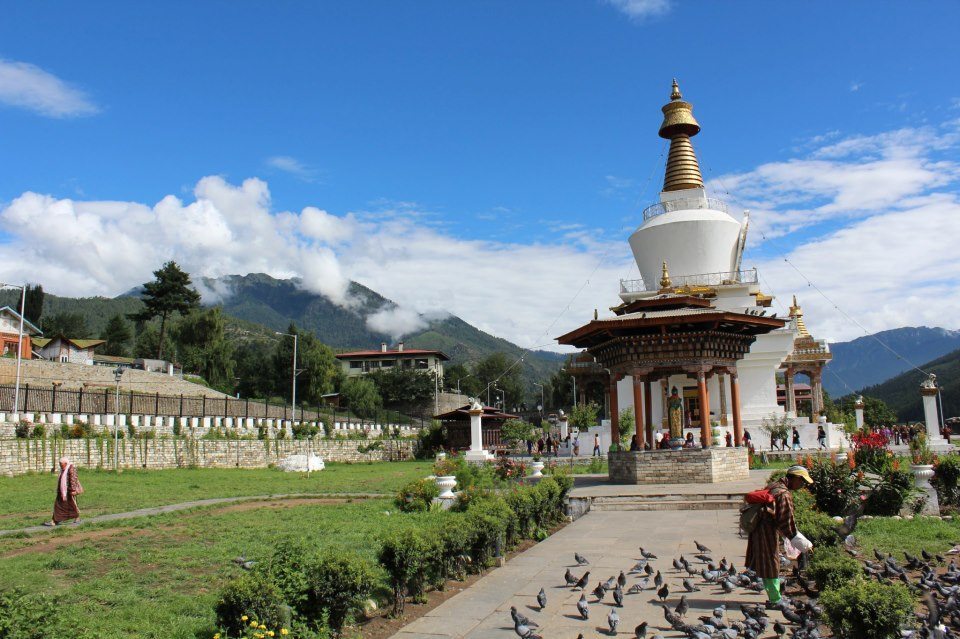
National Chorten, Thimphu
Thimphu, the capital of Bhutan, is one of the world’s smallest national capitals. Home to 100,000 people, it feels more like a large alpine village than a city. In fact it is the only national capital in the world which doesn’t have traffic lights – they were once installed in the town’s main intersection, but the government removed them after people complained that they were “too impersonal”. The traffic warden was reinstated, and to this day directs traffic from his rotunda in the centre of the intersection.
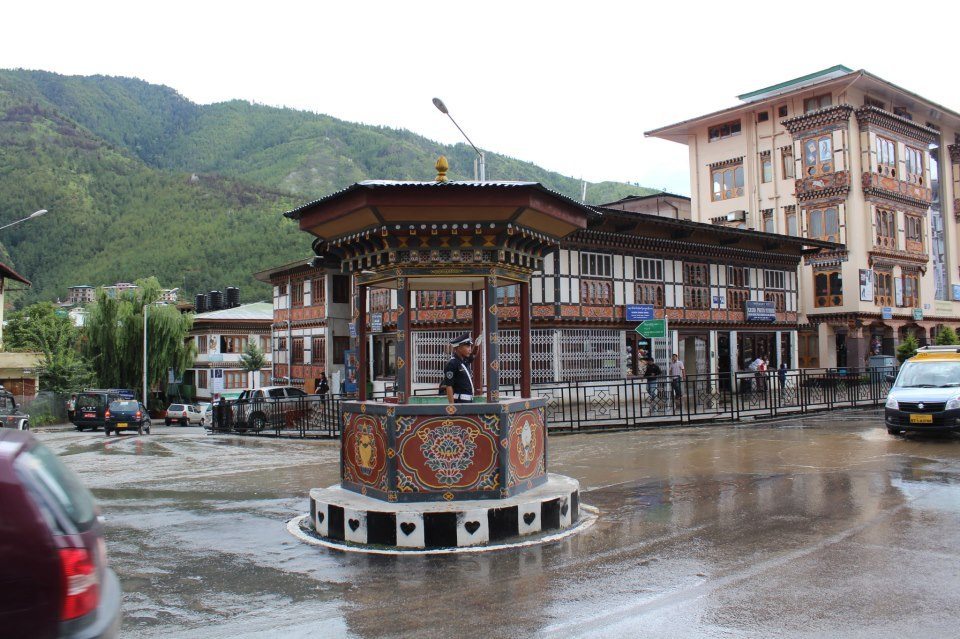
Thimphu central traffic post
My guesthouse was a large old home on the hillside, built like the rest of the city in the Bhutanese style. It once played host to Prince Charles, who visited Bhutan many years ago – although no-one seemed to remember which room he stayed in. I had a traditional Bhutanese dinner at Bhutan Kitchen, a restaurant designed to introduce foreigners to a very foreign cuisine. Bhutanese food is a real mix; often resembling Chinese, but then often not. I was served potato-cheese bake (creamy, local cheese), mushroom-chilli-cheese warm salad, seaweed and milk soup (traditionally made with reeds from local rivers), beef and onion stew and red rice (a wild, local variety). Bhutanese food comes in lots of small portions, which is good if you’d like to taste a few different things. Except the warm salad, the dinner was mildly spiced for foreigners’ palates, however native Bhutanese people prefer their food red hot, cooked with oodles of chillis.
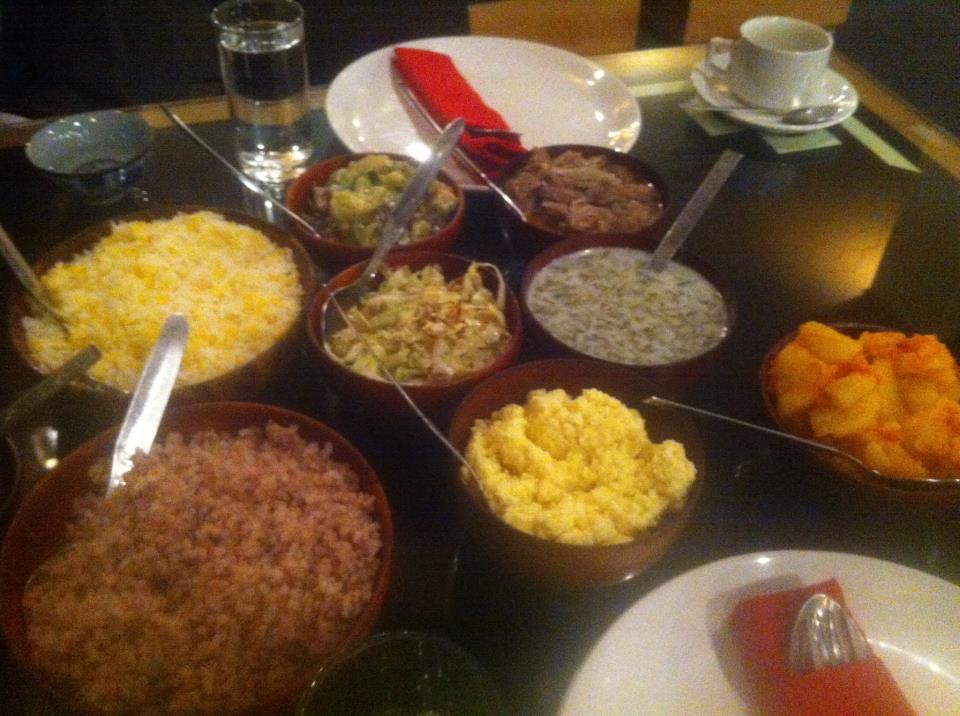
Traditional Bhutanese dinner spread
I ate with Mr Kurma, the managing director of the tour company I had booked with. He and his wife, Tshomo, make a point of having at least one meal with each guest they host in their small but proud nation. We sat and talked about Bhutan, China, Tibet and the world; Mr Kurma reminded me of another, much more famous Buddhist with his spectacles, his benevolent smile, and his warm, sage demeanour.
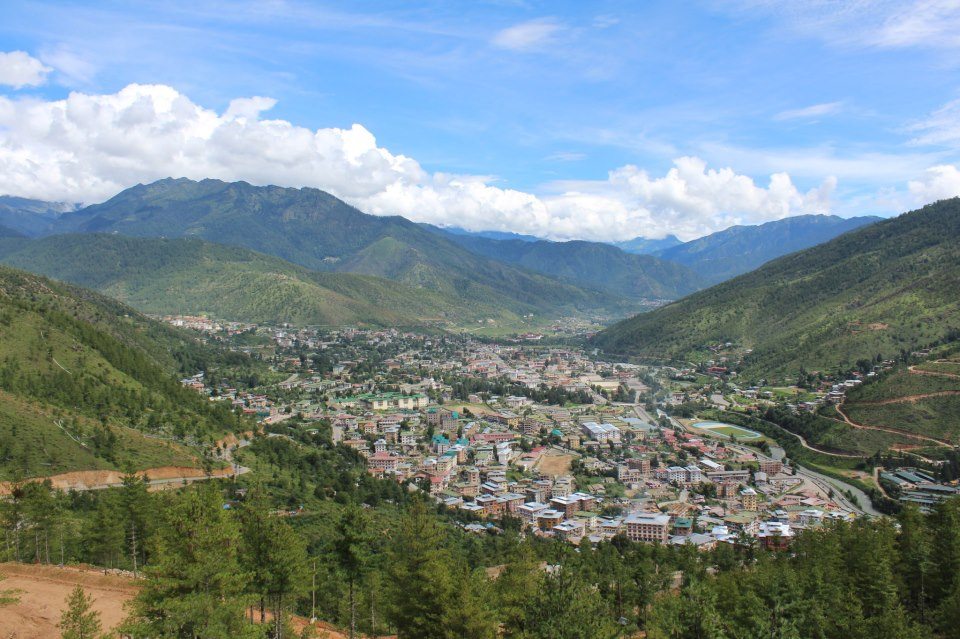
Big it ain’t: Thimphu from Buddha Point
The next day, my guides and I set out to see the city; Buddha point, which overlooks the surprisingly built up Thimphu valley; the central market, full of dried meats and tables of fruit and vegetables; and Thimphu’s nature reserve, home to the takin, Bhutan‘s national animal which has a head of a goat and a body of a cow (really!). The nature reserve used to be Thimphu zoo, but the zoo was closed five years ago in keeping with the country’s environmentalist policy. However the zoo’s takin, when released into the wild, continued to mill around the streets near the zoo’s premises, so the decision was made to turn the grounds into a conservation park.
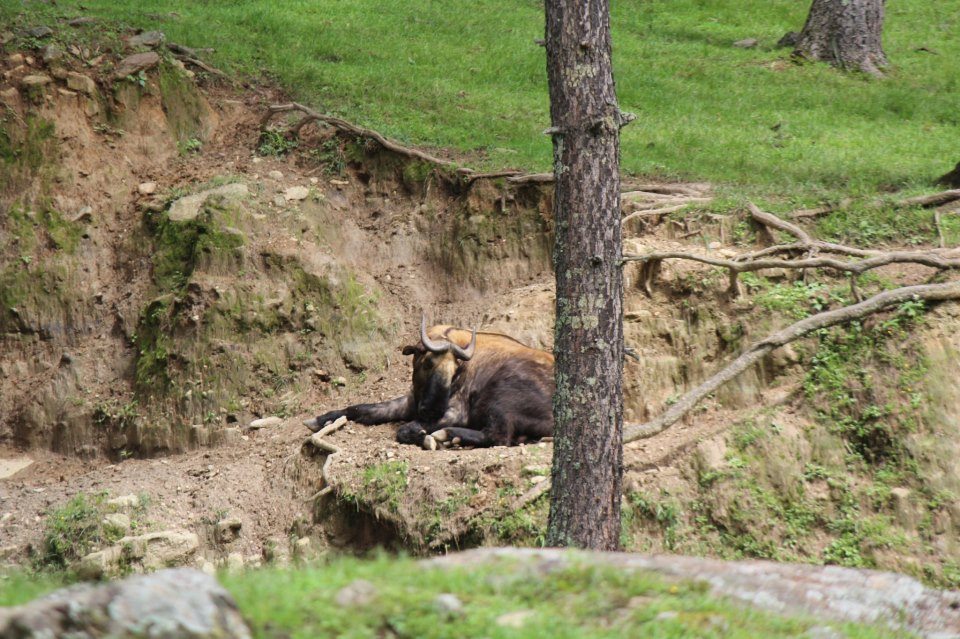
“Are you takin a picture of me?”
Takin at Thimphu conservation park
We also went to the beautifully ornate Thimphu Monastery, the seat of religious and royal power in Bhutan. The roses outside the monastery were so fragrant that I could smell them from metres away, a testament to the clear air and perfect growing conditions. To say that monasteries are important to Bhutan is an understatement; until the transition to democracy in 2008, they were the seat of political power in the nation. In fact the national language, Dzongkha, means ‘language of the monastery’ (“dzong” means ‘monastery’, so Dzongkha = ‘monastery speak’). Among Bhutan‘s 600,000 mostly rural people there are many regional languages, but Dzongkha is what unites them. Too quickly the day was over, and it was time for us to head back to the Paro valley for my last night in this very special land.
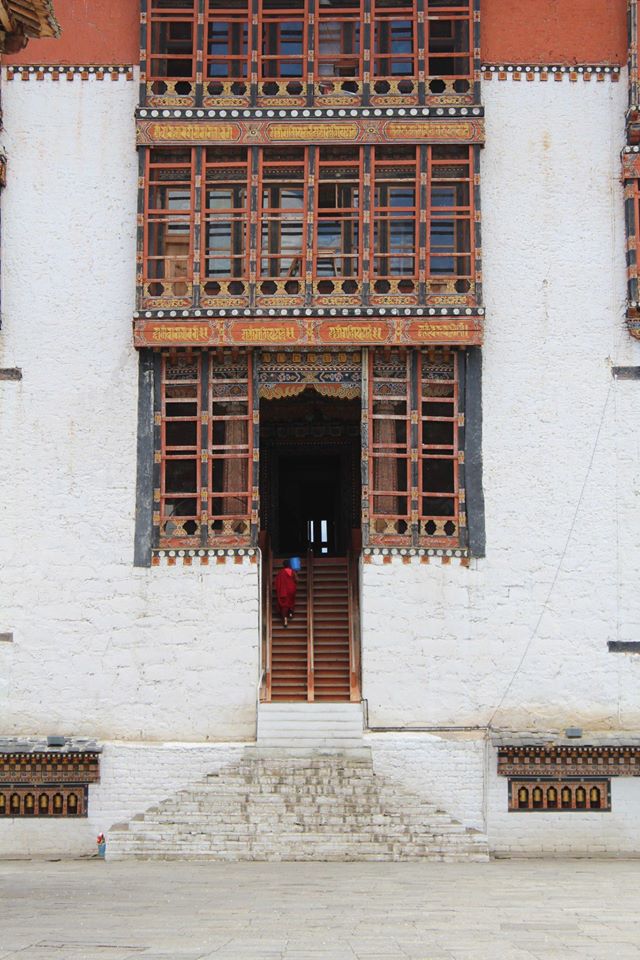
Thimphu monastery
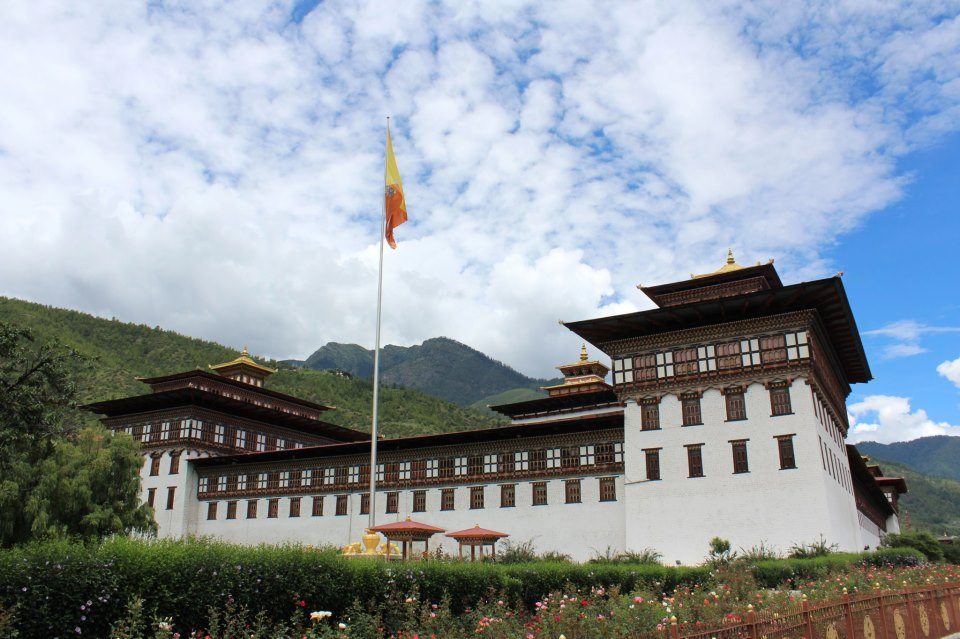
Thimphu monastery
When to go
Peak tourism period in Bhutan is from March to June, as the temperature climbs, and from September to November, after the monsoon recedes. July and August can be rainy, although not unpleasant, and December, January and February see the country covered in a blanket of snow – gorgeous, but very cold and some roads close.
Essential Stats
Culture shock: 8/10
Language difficulty: 4/10
Quality of food: 8/10
Cost: 9/10
Physical demand: 9/10
Advice and warnings
Bhutan is an incredibly safe place in which to travel – the dangers posed by altitude sickness, hiking fatigue and avalanche far outweigh any potential crime or political unrest. That said, do keep an eye on your belongings just in case – this might look like utopia, but you’re still on planet Earth.
Check Smart Traveller or the British Foreign Office for more comprehensive warnings.
Visas
Australians and Pakistanis need a visa in Bhutan, but it is pre-arranged by the travel agency and then collected at Paro airport on arrival. I used the excellent and very friendly Phuentshok Tours and Treks, and would happily recommend them – they organised everything! The price and processing of the visa is worked out on the basis of length of stay.
Indians may visit Bhutan and obtain a visa on arrival, provided that their passport has a further six months of validity.
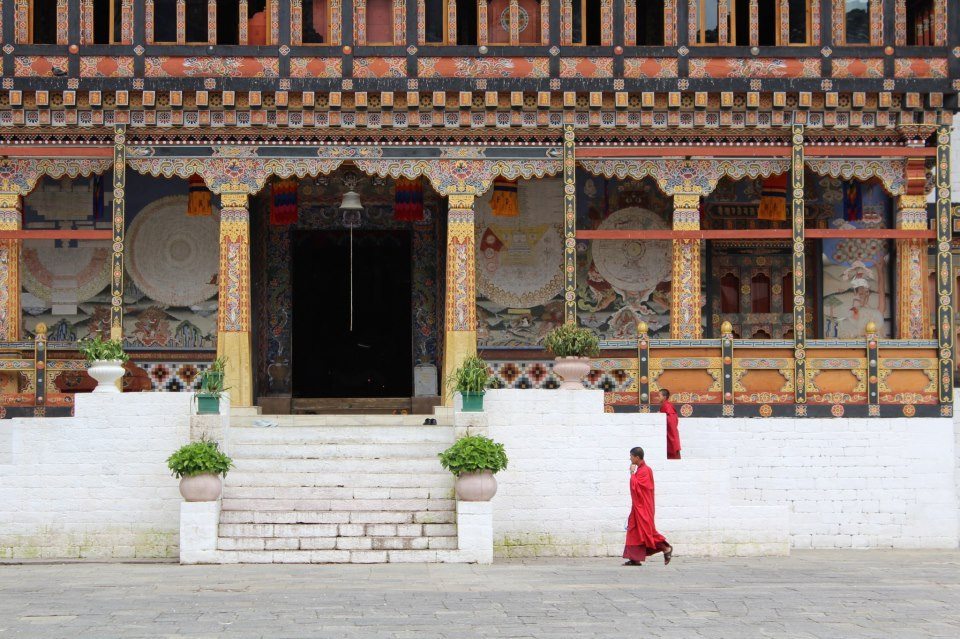
Thimphu monastery
Getting there and around
No foreign airline regularly flies to Bhutan – only Drukair, which flies to a bunch of regional ports.
Melbourne and Sydney
For Australians the easiest option is via Bangkok. Drukair’s Bangkok – Paro flight costs US$799 return, inclusive of taxes. This will be organised along with the tour package. Drukair doesn’t have interline agreements with any other airlines, so you’ll need to disembark from your flight to Bangkok, collect your baggage and re-check in for Drukair onwards to Bhutan. Be sure to leave enough time – a day or two preferably.
THAI flies to Bangkok at least once daily from each of Melbourne and Sydney. All THAI flights arrive and depart from Survanabhumi International Airport (Bangkok’s main airport).
Melbourne (from $1079 return)
Sydney (from $1096 return)
Discount airline Air Asia flies from Melbourne to Bangkok via Kuala Lumpur from $513 return, while Sydney to Bangkok via Kuala Lumpur is from $547 return. Note that Air Asia uses Don Mueang Airport in Bangkok, the older airport which is now popular with discount airlines. Discount airline Jetstar flies directly from Melbourne to Bangkok with fares starting from $563 return. They operate into the main Bangkok airport at Survarnabhumi.
Lahore
Lahoris heading to Bhutan are best to transit through Kathmandu. Flights on Drukair from Kathmandu to Paro cost US$443 return. PIA flies from Lahore to Kathmandu via Karachi several times a week from PKR 59,067 return. Don’t forget to apply for a multiple entry Nepal visa from the Embassy of Nepal in Islamabad (from US$25).
Chennai
Indian citizens can fly directly from Kolkata to Paro from US$430 return. Indigo and Jet Airways fly from Chennai to Kolkata several times daily.
All transport in Bhutan will be organised as part of the tour.
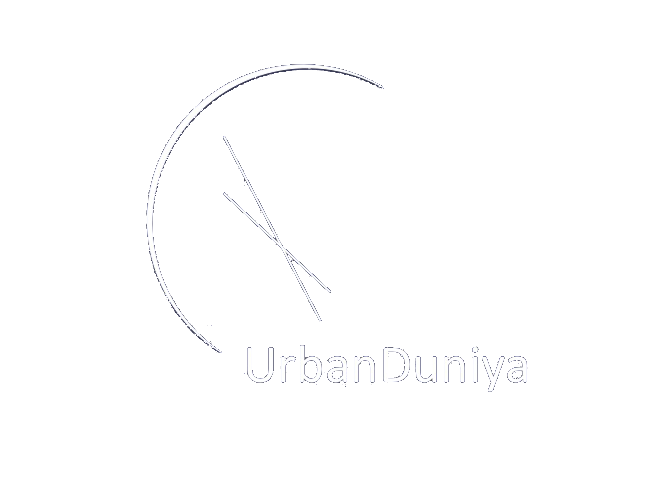
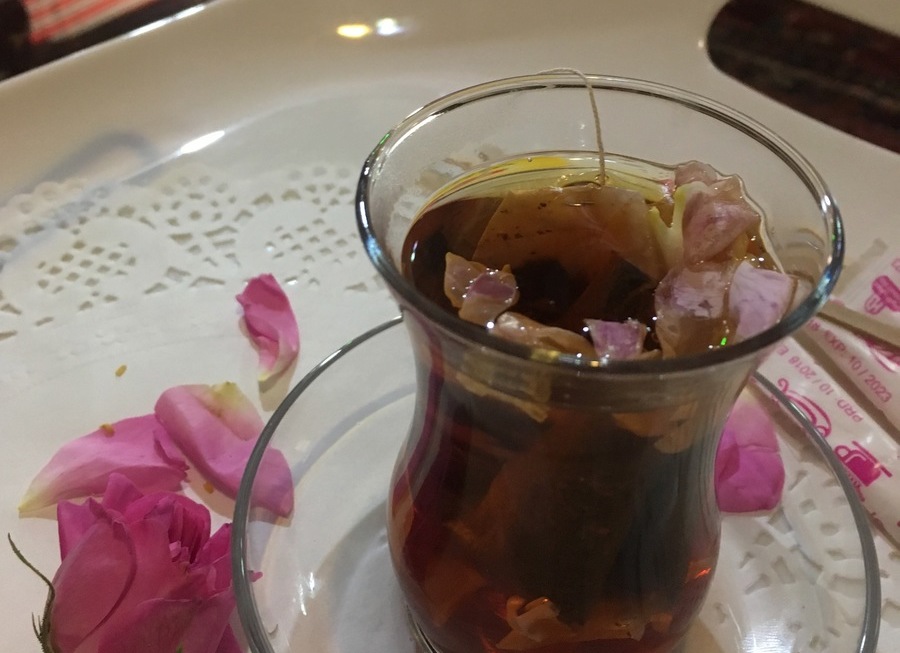


I can see that it must have the cleanest air of any capital in the world! Except maybe Reykjavik…
I’d love to go to Iceland… these offbeat capitals really intrigue me. Thanks for reading 🙂